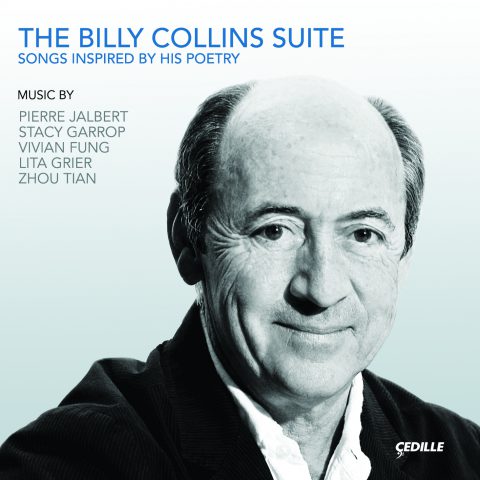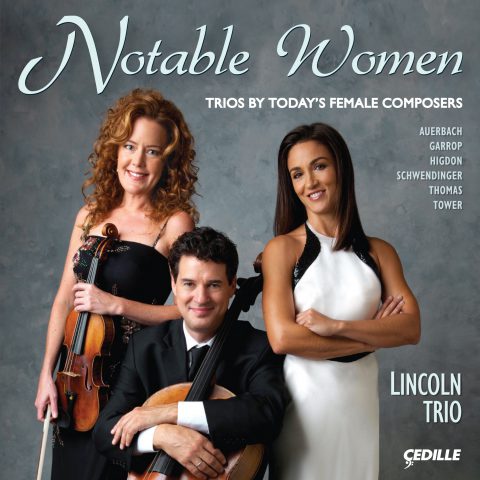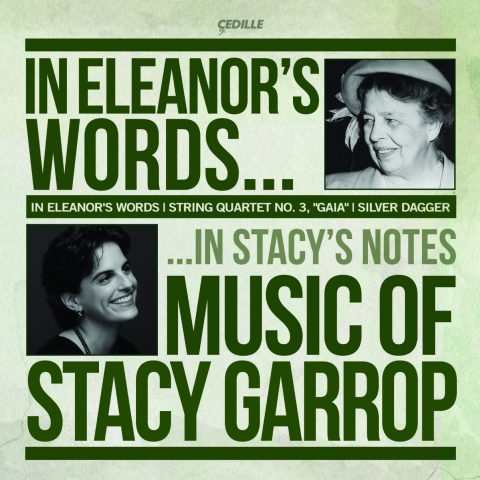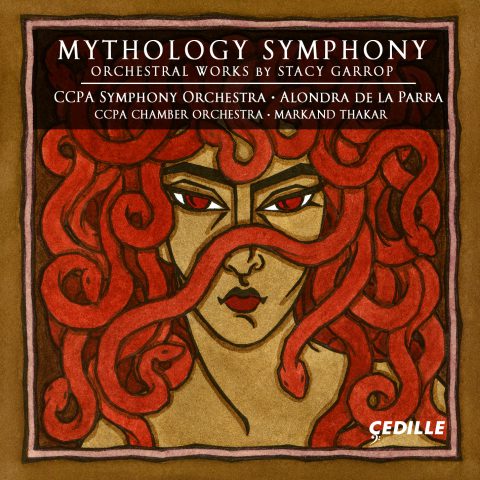Store
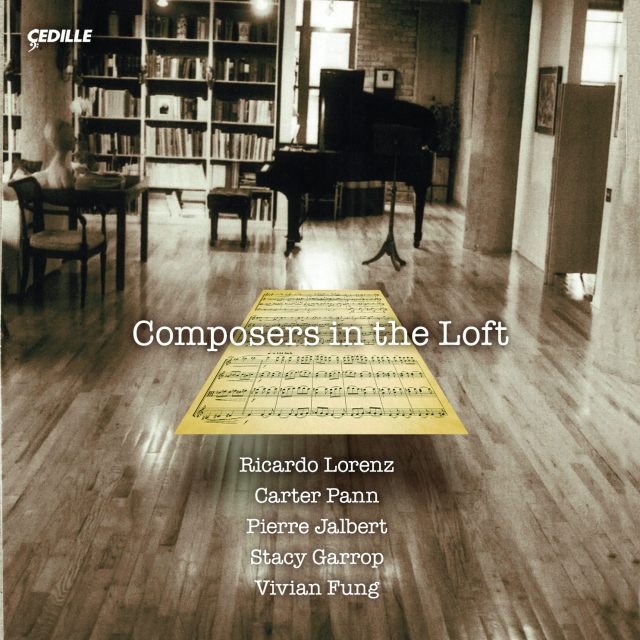
Store
Composers in the Loft
David Cunliffe, Marta Aznavoorian, Biava Quartet, Maia Quartet, Carter Pann, Stacy Garrop, David Ying, Elinor Freer, Desirée Ruhstrat, Vivian Fung
Chicago’s acclaimed Music in the Loft series showcases chamber music’s stars of tomorrow. Composers in the Loft presents five diverse works – four in world premiere recordings – by the series’ former composers-in-residence: Ricardo Lorenz’s Afro-Cuban flavored Bachangó for solo piano; Carter Pann’s eclectic Differences for cello and piano; Pierre Jalbert’s in turns rhythmically driven and mysterious Trio for violin, cello, and piano; Stacy Garrop’s String Quartet No. 2: Demons and Angels, tracing a true-life descent into madness and murder; and Vivian Fung’s Miniatures for clarinet and string quartet, inspired by the music of China’s Uighur people.
Among the performers are the Naumburg Award winning Biava Quartet, cellist David Ying of the Ying Quartet, and clarinetist John Bruce Yeh of the Chicago Symphony Orchestra.
Preview Excerpts
RICARDO LORENZ (b. 1961)
CARTER PANN (b. 1972)
Differences for cello and piano
PIERRE JALBERT (b. 1967)
Trio for violin, cello, and piano
STACY GARROP (b. 1969)
String Quartet No. 2: Demons and Angels
VIVIAN FUNG (b. 1975)
Miniatures for Clarinet and String Quartet
Artists
1: Marta Aznavoorian, piano
2: David Ying, cello
Elinor Freer, piano
7: Lincoln Trio
9: Biava Quartet
13: John Bruce Yeh, clarinet
Maia Quartet
Program Notes
Download Album BookletDifferences for cello and piano (1998)
Notes by Carter Pann (b. 1972)
Differences was composed in February 1998 for cellist Derek Snyder. The work is comprised of five short movements, very much like a Baroque suite or partita. The individual pieces, however, are radically different from each other in style and content. Originally, my plan was to transcribe an earlier chamber work, Dance Partita, in its entirety for cello and piano (resulting in seven or eight movements). Instead, the project grew into its own as my work on it progressed. The only movements taken from the chamber piece are “Air” and “Country Dance.”
“strand” is a kind of pop tune where the cello has the vocal line. The piano supplies the harmonies and rhythms against which the cello sings. Differing from an actual pop tune, the rhythms are a bit more complex and sometimes jarring. “Air” takes its language from the Baroque. The title refers to the Baroque “canto” style of long legato vocal lines over a slow, undulating accompaniment. “Country Dance” is a peasant tune. The middle section is very pastoral, including church bells; one might imagine the drone of bagpipes over the countryside. Very different from the preceding movement, “Blues” offers a chance for the performers to show a little soul. As with “strand,” “song” is a pop tune. This one is a bit more direct in its tone and more instantly memorable as it draws its language from the late 1970s and early 80s.
Trio for violin, cello, and piano (1998)
Notes by Pierre Jalbert (b. 1967)
This work is in two movements of extremely contrasting character. The first movement, “Life Cycle,” consists of four sections, each based upon the pulse of a quickly beating heart. The music changes considerably from section to section, but the basic pulse or beat remains constant. I heard my son’s heartbeat for the first time a few months into my wife’s pregnancy and was very surprised at how rapid it was. This rapid pulse became the basis for the first movement.
The second movement, “Agnus Dei,” represents the sacred, and is mysterious and lyrical in character. The structure of the movement is modeled after the 3-part form of the Agnus Dei prayer…. It opens with a violin melody, full of pitch bends, played over a cello drone. This melody is then passed on to the cello, finally cadencing with all three instruments. This material is then repeated (much like the repetition of the first line of the prayer), but at a different pitch level. The music then moves on to a more developmental section, still containing the original tune, but ultimately ends up in a different place (much like the last line of the prayer). While I was working on this movement, Mother Teresa passed away. I therefore chose to dedicate this movement to her life and works.
Bachangó (1984)
Notes by Ricardo Lorenz (b. 1961)
Composed in 1984, Bachangó is a brief, kaleidoscopic look at Afro-Cuban music. The title derives from three terms related to this sphere: Batá, Charanga, and Guaguancó. Elements belonging to these genres are weaved together in order to create a fast changing, fantasy-type work. The lyrical quality of the Charanga is complimented by the rhythmic rigidity of the Guanguanco, while the patterns of the religious Batá drums enwrap the piece in an atmosphere of mystery. It was through Bachangó that Music in the Loft’s Fredda Hyman first became acquainted with my music.
String Quartet No. 2: Demons and Angels (2005)
Notes by Stacy Garrop (b. 1969)
Music in the Loft commissioned the first two movements of String Quartet No. 2: Demons and Angels for performance by the Biava Quartet on its 2004/2005 concert series. The Loft subsequently commissioned the rest of the piece, premiered in its entirety by the Biava Quartet at Yale University in November 2005. The work received its Chicago premiere at Music in the Loft in October 2006.
Disguised demons, forgiving angels, tortured human souls. String Quartet No. 2: Demons and Angels tells the story of a man who thought his actions were guided by the forces of good, only to discover that he has lost his mind and wreaked havoc on earth by murdering five people.
The first two movements explore the man’s personality. I. “Demonic Spirits” addresses his dark persona. The movement begins with a jolting chord played five times, one for each murder. These chords return at poignant moments throughout the piece. This movement contains two main themes: the first theme is very militaristic and sharp, while the second theme is impishly sinister.
II. “song of the Angels” remembers the goodness in him before his personality transformed. The cello has a long solo whose material was created by blending elements of the first movement’s themes, thus representing how evil and good can spring from the same roots.
III. “Inner Demons” depicts the man as he loses his mind. This movement contains four themes: a tarantella, a demented waltz, a scherzo, and the Appalachian folk hymn “the Wayfaring Stranger.” The themes are stated quite briskly until arriving at the hymn. This theme consumes the man; it destroys his mind and he melts down. As his mind is slowly rebuilt, his thoughts become increasingly chaotic, until elements of all four themes are heard simultaneously. Finally, the hymn asserts itself above all, and we hear the man commit the five murders that opened the first movement.
The piece concludes with IV. “Broken Spirit.” This movement explores his devastation at what he has done. The man is caught and confined to life in prison. With a repetitive four note boxlike motive, the man paces in his cell while his thoughts alternate between extreme violence and pleading hope that, by confessing his crimes, he can be saved by the grace of an angel.
Miniatures for Clarinet and String Quartet (2005)
Notes by Vivian Fung (b. 1975)
Music in the Loft commissioned Miniatures as a memorial to the life of Chicago journalist Ted Shen, a close friend of the series. The composer writes:
Although born to Chinese parents, I grew up in Canada and have lived in New York for the last dozen years, and my life surroundings and musical training have largely been Western-influenced. However, in my work as a composer, I have become increasingly interested in incorporating my Asian identity into my music. Lately, many of my works have been inspired by the folk music of the minority regions of China and the gamelan orchestras of Indonesia. When Music in the Loft approached me to write a new piece for clarinet and string quartet, I turned to the traditional music of the Uighur people of China’s Xinjiang province for inspiration. Occupying a central location on the Silk Road, Xinjiang has been influenced by many different cultures, resulting in a fascinating blend of Han Chinese, Muslim, Uzbek, Kazakh, and Russian influences.
After listening to many recordings of Uighur music, I happened upon a recording of a folk song entitled “Love for Homeland” (Gùxiang zhi liàn). That recording featured a melancholic folksinger, accompanied by a guitar-like instrument. The soulfulness of the folksinger’s voice enchanted me. I immediately decided to use that song as the basis for my clarinet quintet, which I called Miniatures because each of the movements is short and offers a little glimpse into the different moods of the folk song.
Miniatures is in four movements, each of which develops material from the folk song “Love for Homeland.” It is a sort of theme and variations, with each of the movements essentially being one variation. However, only in the last movement do I have direct quotations from the folk song. The final movement begins with a clarinet solo evoking the cries of a folksinger from the Chinese countryside, with plucked strings creating the guitar-like accompaniment. The first three movements bring out different sides of the folk song. The first is ethereal as the melody floats in and out of the atmospheric environment. The second movement is very playful and light. The third movement features an exotic scale and the twirling motion of dancers spinning.
Album Details
Total Time: 78:30
Producer: James Ginsburg
Engineer: Bill Maylone
Graphic Design: Melanie Germond
Cover Photo: Home of Chicago’s Music in the Loft concert series (photo by Barrett Cooke) with sheet music from Stacy Garrop’s String Quartet No. 2: Demons and Angels
Recorded: October 9-10, 2006 (Garrop); October 23, 2006 (Pann); December 5, 2006 (Fung); January 23, 2007 (Jalbert); and January 25, 2007 (Lorenz) at WFMT, Chicago
Steinway Piano: Charles Terr, technician
Publishers:
Lorenz – MMB Music, Inc. ©1984
Pann – Theodore Presser ©1998
Jalbert – Pierre Jalbert ©1998
Garrop – Inkjar Publishing Co. ©2005
Fung – Vivian Fung ©2005
Funded in part through a grant from The Aaron Copland Fund for Music, Inc.
© 2007 Cedille Records/Cedille Chicago
CDR 90000 100
